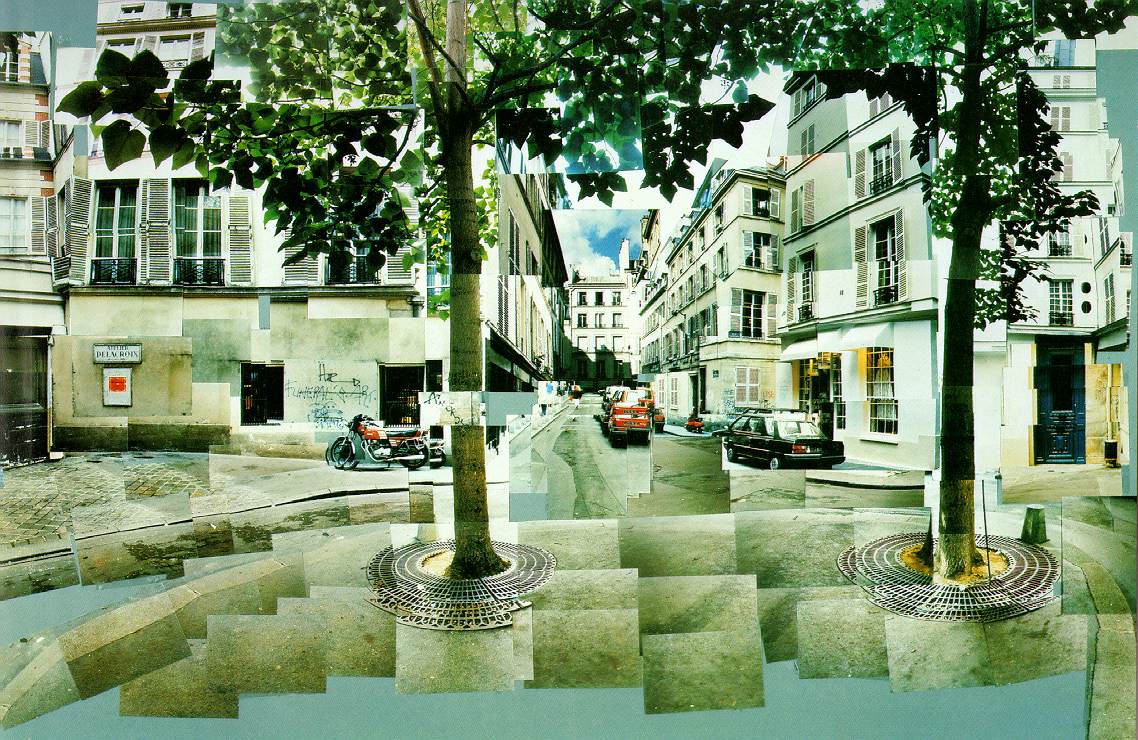Mik Critchlow was commissioned to photograph his home town of Ashington which is known as the largest coal mining village in the world.
Monday 31 March 2014
MIK CRITCHLOW
Thursday 27 March 2014
change
After visiting the Barclay HQ and meeting some of the people that will be involved in the project I decided that I was nor as interested in doing this project I don't know if it was because the interns who work with Barclay did not know what they were doing or because they did not seem interested in what we doing. so I thought that I would try one or both of the other options that I could do.
Their is the interview with I thought about and i would like to do this so that I could get some more incite in to what I would need to do to become the type of photographer that I want to be. I don't know who i could interview but I will have a look.
Their is also the work experience choice that I could do this option would be a great experience for me but don't know how I could do this their is a local gallery that i could try out or I could try shadowing a local photographer I will have to have a think about it.
Tuesday 18 March 2014
Notes on Barclay's breife
During the brief for the Barclay project I wrote down some notes that was what they wanted and what their ideas were and some basic background information on what we would be doing.
Barclay Breif
Background
Part of the Barclays Group, Retail and Business Banking (RBB) operates across 21 countries and is most
recognisable on the high street thanks to the branches, Barclaycard and our international operations
across Europe and Africa.
With over 9,000 people located globally in Europe, Asia and Africa, the RBB Technology team makes up
the majority of this group. They are the people who drive technology across the whole of RBB, working
closely with teams in all areas such as Barclaycard, Barclays Africa, UKRB and Europe Retail Banking.
Our technology team is behind some of the most high profile innovations on the market, from
contactless technology to mobile banking. So the work you do is very visible to our 37 million
customers around the world.
Here at Barclays Technology Centre Radbroke (BTCR) there are over 3.5k colleagues working at the site
delivering technology every second of the day to our customers and colleagues. On the site there are
17 social groups, farmers markets, gymnasium, tennis courts and a historical 19th century main hall.
The brief
To understand and capture the success of the apprenticeship scheme at BTCR.
Try to encorporate the diverse culture around the site, with the fresh and unqiue vibe that the
apprentices bring to the site.
Produce individual portraiture photography in a variety of styles that can highlight the the great
achievements and contributions that have been made by apprentises and the scheme
Sunday 16 March 2014
photography- copy rights
Using the work of others
As with all copyright work, you should first obtain permission from the copyright owner before you use someone else’s work. You should also be prepared to pay a fee, as many photographers will charge you for using their work.
Only the copyright owner, (or his/her authorised representative), can give permission, so you should contact the photographer, or his/her company, directly for consent. For images published on the Internet, it is typical to contact the webmaster of the site in the first instance, unless the site provides contact details for the owner of the images.
The copyright owner has no obligation to allow you to use their work, and can refuse permission for any reason.
Archive Visite
For this assignment we had to get images of the our given area, so we went to the archives to get the images of the streets and rounds that are located on the map. while we were in the archives we had to search through the fills that were in alphabetical order to find the images we needed to use for the re-photograph project.
Acresfield House
Claremont Road
I will be going back to the archives to get some more images before I go out take my own because I do need some more images from different roads and streets. Just in case I don't find what remains of the roads interesting so have a lot of photos from the archives would be a good idea.
Saturday 15 March 2014
Re-photography Runcorn
The video below shows photos of Runcorn from the past and how those areas look know. I thought I would look into this because I know their area well since it is where I life. I like to see how things have changed other the years and as our can see with the video a lot has changed over the years
Thursday 13 March 2014
Nicky Bird
Nicky Bird is an artist whose work investigates the contemporary relevance of found photographs, and hidden histories of specific sites, investigating how they remain resonant. She has explored this through photography, bookwork's the Internet and New Media. In varying ways she incorporates new photography with oral histories, genealogy, and collaborations with people who have a significant connection to the original site, archive or artefact.
The history under our feet to the time when our own may be under foot in future: this was the central theme explored by this project.

It set out to see how photography and archaeology could be incorporated in both literal and metaphorical ways to speak of ‘history’ – particularly history that is within living memory connected to a changed, erased or hidden place. The project worked in four locations across Scotland, in close collaboration with a range of individuals.

The family snap played a central part in the process – see examples below of photographs of places that have undergone major change and in which personal history has been ambiguously caught.
Dear Photograph

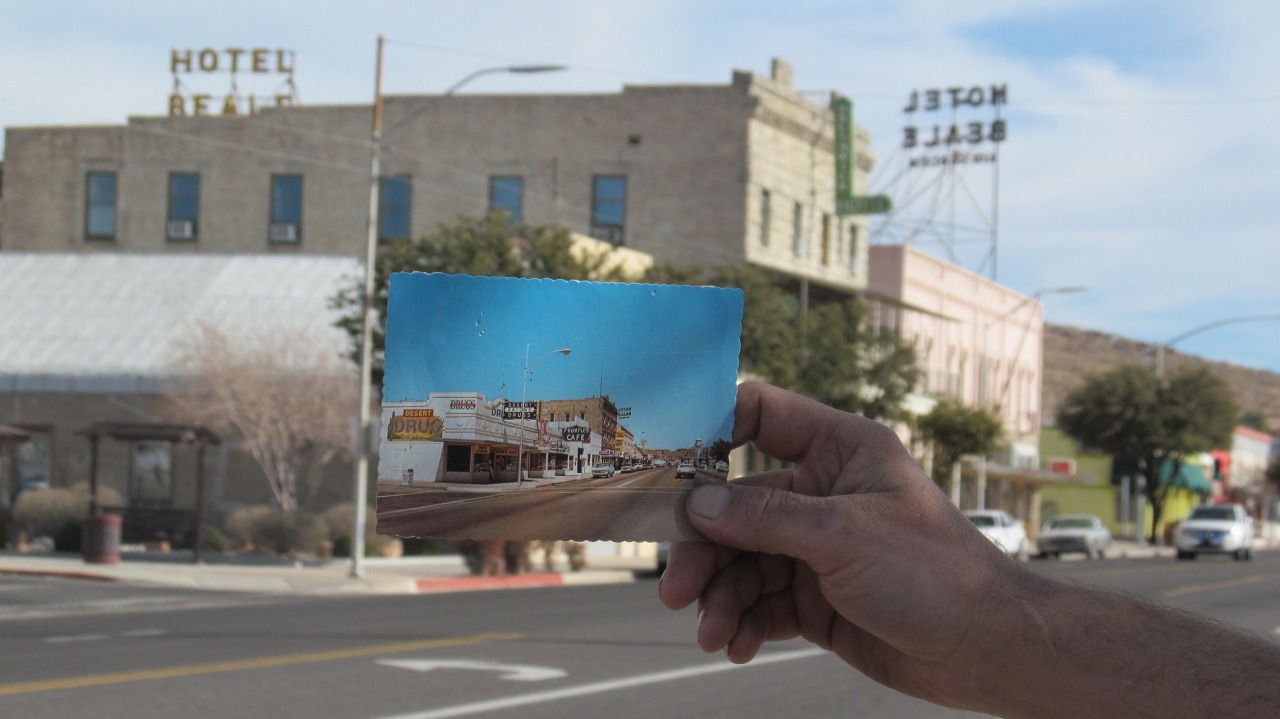
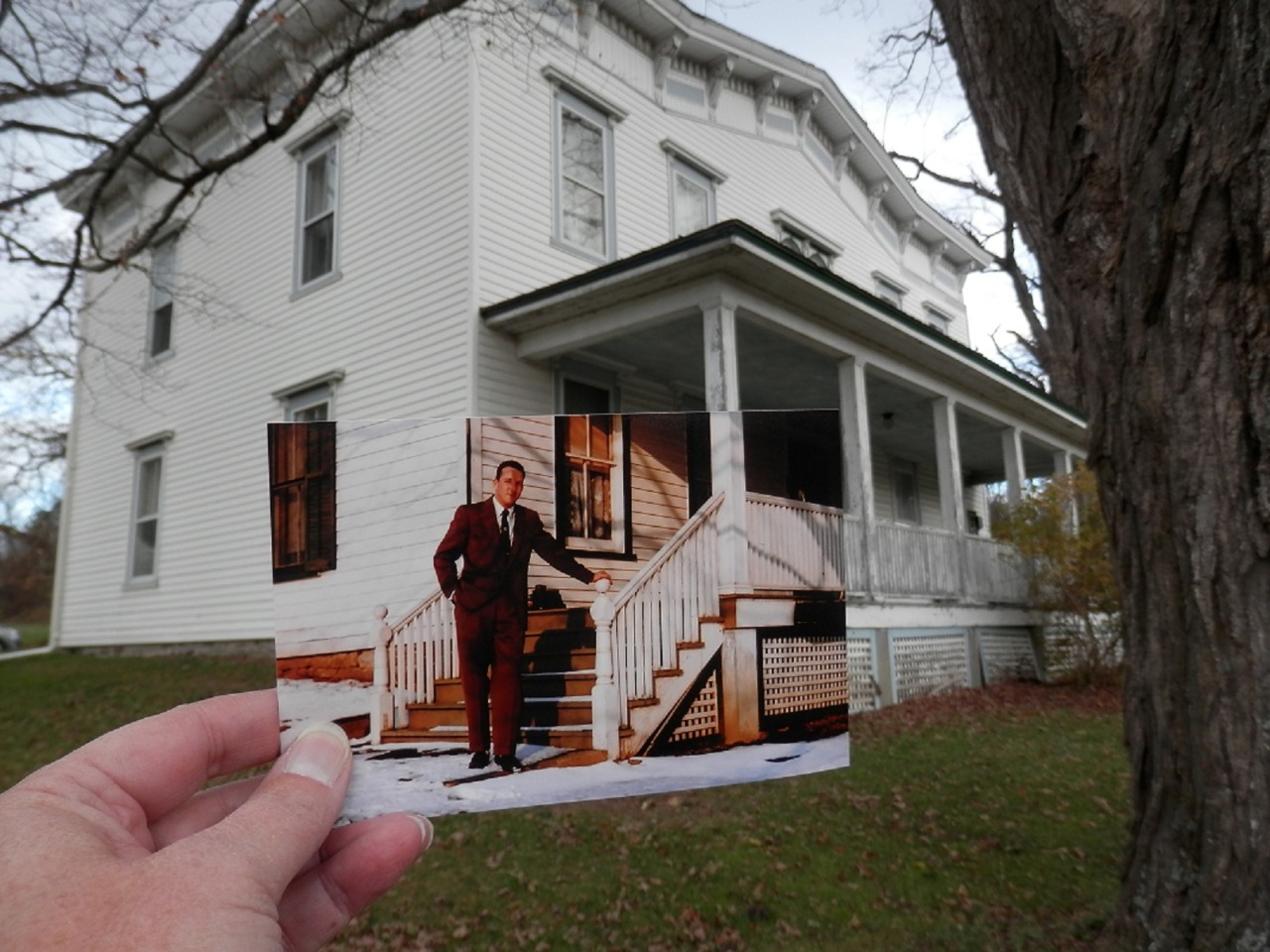
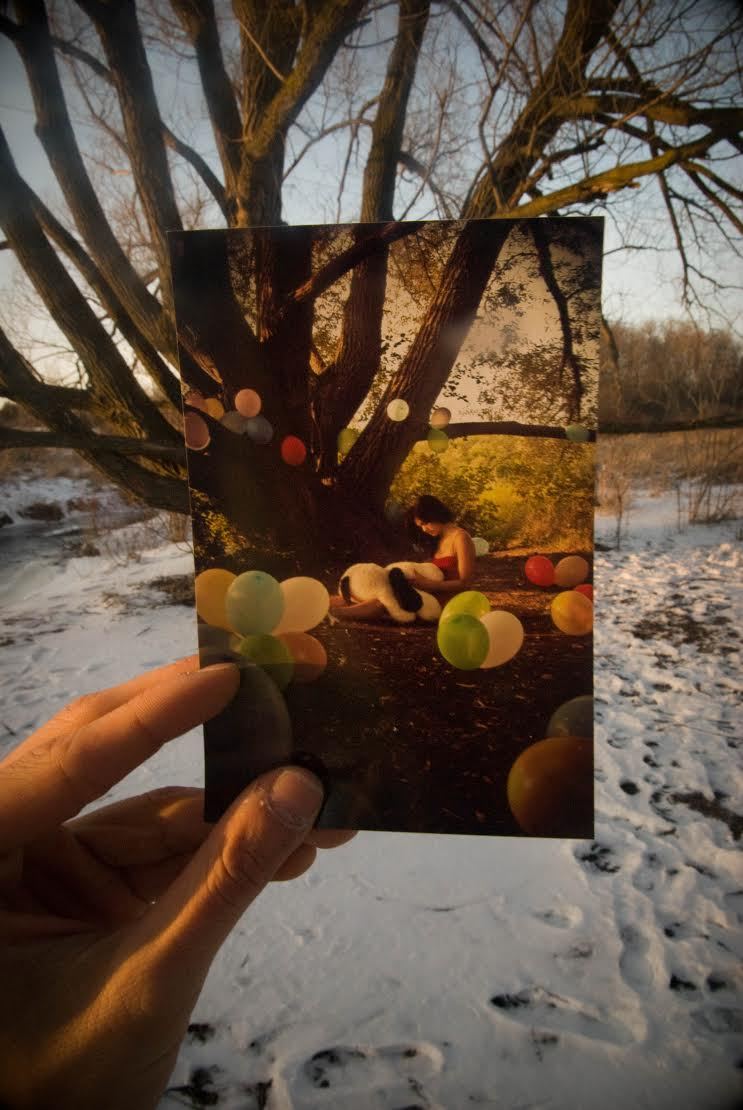
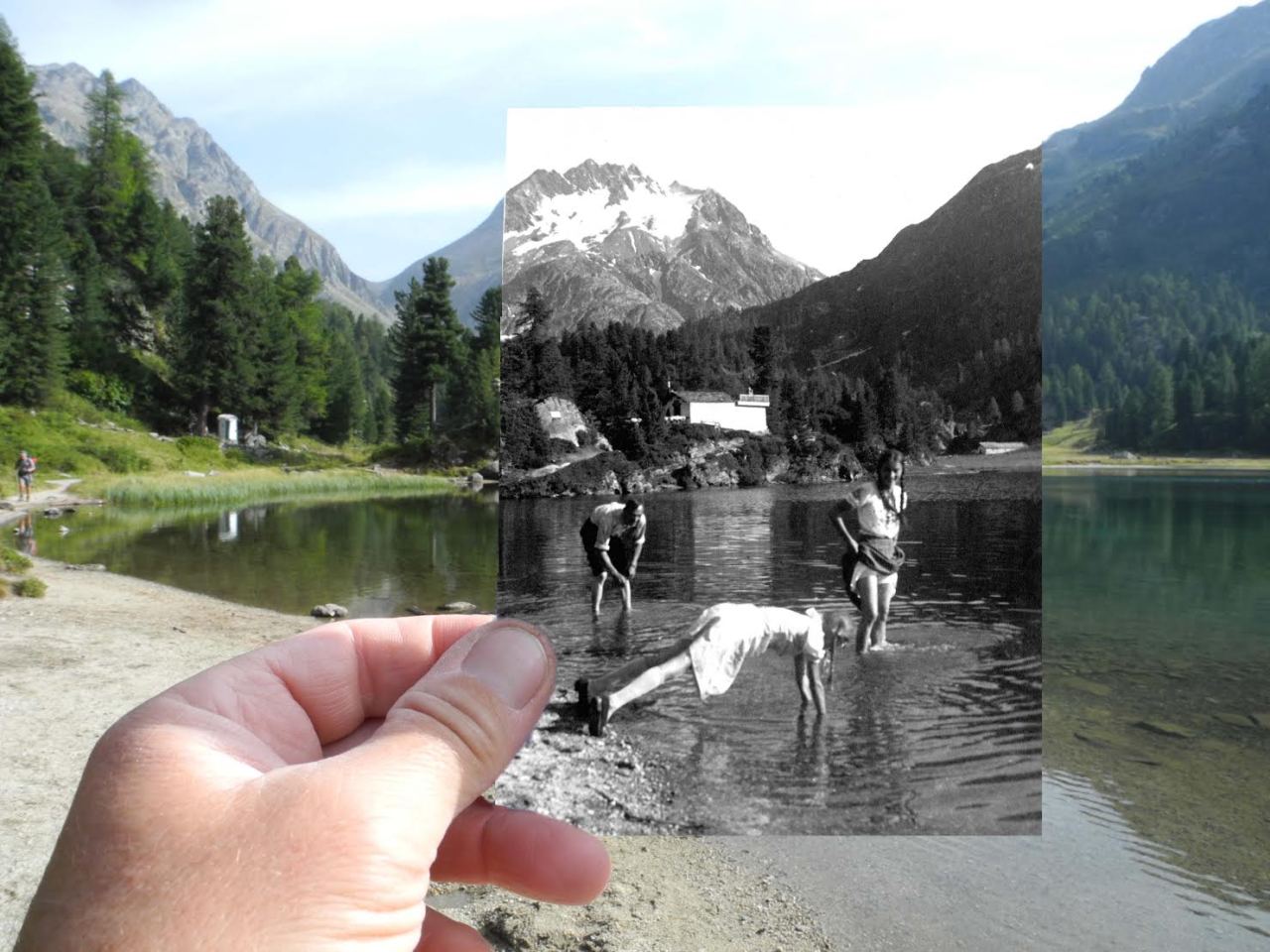
A friend showed me this website that is basically people around the world re-photographing scene from the past it could be their past or someone they love like childhood photos. i found the website to be quite interesting.
http://dearphotograph.com/
Mark Klett
Mark Klett is primarily known as a photographer of the Western landscape, although his work speaks broadly about issues of place, culture, history, land use, and the passage of time. His many projects, often resulting from collaboration and interdisciplinary exchange, are a form of visual research, the product of exploration and examination, as well as a contribution to the photographic art form

Looking at Mark Kletts work it reminds me of David hackneys joiners, since their are a number of images making up the one image. its only similar to hackneys work because of how the 5 images make 1 even though hackneys work was his own original images and mark kletts work is a collection of other photographers images I still find them both interesting in their own ways.


Mark Klett and Byron Wolfe
Rock formations on the road to Lee's Ferry, AZ, 2008. Left Inset: William Bell, 1872. Plateau North of the Colorado River near the Paria. Right Inset: William Bell, 1872. Headlands North of the Colorado River.
I like that the older images have something different in them it can be someone sitting on the ground or a car.
I would like to have something different in the images that I will be putting together, I think it would make the images more interesting.
Tuesday 11 March 2014
Christopher Rauschenberg- Paris Changin
In 1989 Christopher Rauschenberg re-photographed Eugene Atgets photos of Paris in the 1900. Atget straightforwardly documented the city with photographs that give you the feeling that all the transitory things that people do and are have washed away, leaving only their transcendent accomplishments

On a 1989 trip to Paris, Christopher Rauschenberg suddenly found himself face to face with the spiral-topped gatepost that in a image by Atget. he rephotographed Atgets gatepost from memory and wondered how many other Atget subjects might still be holding their poses. There, among the things and places that Atget had admired, Christopher returned to do a re-photographic exploration to discover if the haunting and beautiful Paris of Atget’s vision still existed.
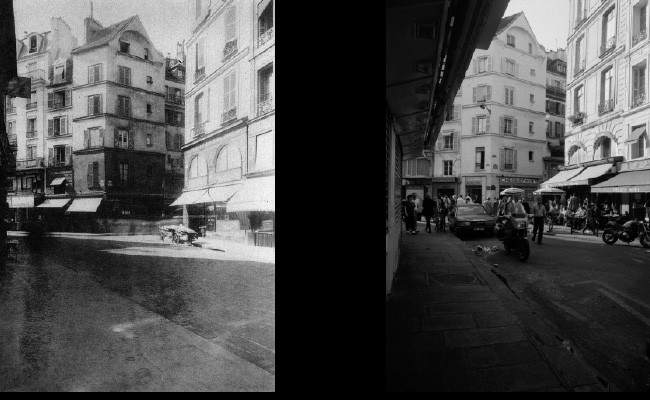
I like how you can see the difference with the image on the left which is Eugene Atgets image which shows a empty street in the 1900's to the image to the right which is by Christopher Rauschenberg in 1989 the image shows cars and bikes which is completly different from Eugene Atgets image.

The images above show a street corner photographed at different times in history. The first image which is by Eugene Atget show a corner shop with a cart outside it the image looks like it has be photographed through a window. The image on the right but Christopher Rausechenberg show the same corner street but with the shop being bricked up which I think makes it look kind of boring because with the shop it made the view (me) look at what the shop could be but when looking at the image on the right all yo see is bricks which I think is boring. Not only does the image not have the corner shop it also has a scooter in font instead of a cart this shows the time of the image are different.not only that but the different in detail shown due to cameras.
Micheal Wesely
Micheal Wesely is a German photography artist. His images have a long exposure that maps out in a way a static time lapse as they record information over an extended period of time. They literally allows us to see time in one image.

What’s remarkable about these shots is the length of exposure used to produce them – many of the shots were set to expose for over 3 years – substantially longer than the second longest exposure done by Justin Quinnell for 6 months using a jury-rigged pin hole pop-can rig.
The next two shots are of the Leipziger Platz in Berlin – they were taken over a 13 month period.


I find Micheal Wesleys image to be quite ghostly because of how the long exposer has shown the construction over time. you don't really know were to look with the images this also makes the images seem quite chaotic.
http://www.unfinishedman.com/the-long-exposures-of-michael-wesely/
Rational
With this assignment “Re-photography” were we will be photography areas that have already been photographed in the past, we were put in to groups and given maps of the area that we would be focusing on. After looking at the original photographs that I got from the archives, we got a sense of what we each wanted to do.
To get a better idea of what I wanted to do with this assignment I looked at some photographers who have also done a re-photography project. One of them was Sergey Larenkov who did his re-photography project all over Europe focusing on the places that had a lot of historic photos he then digitally combined the original photos and the re-photographed photos together to make and photo that gives you a glimpse of the past. Sergey Larenkovs work is most likely the most inspirational with how he combined the original photographs and the re-photographed ones
Were Sergey combined the original and re-photographed photos together in digital way I want to combine the images is a similar way but instead of doing with photo shop I will be collagen the photos together by hand which I have done in the past with other projects this may become difficult because I will have to try to get the right angle so when collagen them together they would fit perfectly even though saying that I think collagen two photos together that are at different angle would be difficult. I would like to try combining the photographs together through photo shop but not in the same way as Sergey because I would like to layer the original photo over the re-photographed photo kind of like its ghosted over.
Hopefully I will be able to have a set of photos that show the original photo and the re-photographed photo combined together in some way.
Sergey Larenkov
Taking old World War 2 photos, Russian photographer Sergey Larenkov carefully photoshops them over more recent shots to make the past come alive. Not only do we get to experience places like Berlin, Prague, and Vienna in ways we could have never imagined, more importantly, we are able to appreciate our shared history in a whole new and unbelievably meaningful way.

Mixing the past and present in one image is not necessarily new, however the photo-compositions of Sergey Larenkov make for eerie viewing. The contrast of modern life with all its luxuries against the grit and desperation of the second world-war make for images that not only appear ghost-like, but also stimulate reflection on times and hardships that seem a world away.

Sergey Larenkov re-photography has given me a some ideas of what I would like to do with my own re-photography. The idea of joining the past and the present together gives you a idea of how things ave changed over the years.
The image above shows two images in one they are from different times in history. In the centre of the image is the first thing you notice because of the change in colour and state of the stair and pillars compared to the more modern image were the stairs and pillars are clean with no damage and gravity on it. the image works quite well because of how the alignment of the setting is prefect even the solders in the centre of the image.
Re-photography
Rephotography is the act of repeat photography of the same site, with a time lag between the two images; a "then and now" view of a particular area. Some are casual, usually taken from the same view point but without regard to season, lens coverage or framing.
example
Sergey-Larenkov

Mark klett

Two examples of re-photography I find the way this has been done, show the past and the present in the same image quite interesting.
Briefing
Core Brief
Research and develop a re-photography project focusing on a given area of Salford, and in response the photographic work held in the collection at Salford museum and art gallery. Students will exhibit one image from this project at Salford museum and art gallery between 3 at 2014. level 4 students are also responding to the collection and will be showing books during the exhibition.
I will be going to the Salford museum and art gallery on Wednesday 12 may 2014 to view the archives of photo taken over the years in Salford this will give be a idea of what I will be photographing.
Options
The options will help me contextualise your current awareness of the photographic interindustry and then relate this to possible career paths within the creative industries I will choose one of the following routes through which to satisfy the learning outcomes of this unit:
The fist option is a work placement with a professional photographic practitioner for at least one working day while I am at a placement I will be writing a report that will reflect upon what I have done and what I have learnt during this placement
The second option is a interview with a professional photographer in the area that I am interested in working in, this is to gain a wider understanding of the industry as a whole.
The third option was a life brief a Barclay bank staff portrait.
Subscribe to:
Posts (Atom)




.jpg)

.jpg)

.jpg)
.jpg)
.jpg)
.jpg)







.jpg)
.jpg)
.jpg)


.jpg)
